True/False
Indicate whether the statement is true or
false.
|
|
|
1.
|
(5 points) Annual rings in a
tree trunk occur when uneven growth occurs. In the spring, large, relatively thin-walled cells are
produced; in the summer, smaller thicker-walled cells are produced.
|
|
|
2.
|
(5 points) Shade-intolerant tree
species need direct sunlight to grow well.
|
|
|
3.
|
(5 points) The central stem of a
compound leaf that the leaflets are attached to is known as the rachis.
|
|
|
4.
|
(5 points) Throughout modern
times, deaths due to wars did not offset the overall human population growth.
|
|
|
5.
|
(5 points) The primary cause of
most population growth in the last 300 years is declining mortality.
|
|
|
6.
|
(5 points) “Guest
Workers” often take high paying, white collar jobs from the citizens of the
country.
|
|
|
7.
|
(5 points) Humans are
part of the environment.
|
|
|
8.
|
(5 points) Environmental science is not environmentalism.
|
|
|
9.
|
(5 points) Human
activities are affecting the Earth’s climate.
|
|
|
10.
|
(5 points) The seed of the Ohio
Buckeye is poisonous to animals but people can eat it because we grind it up and cook out the
toxins.
|
Multiple Choice
Identify the choice that best completes the
statement or answers the question.
|
|
|
11.
|
(5 points) Which U.S. Forest
Region is considered the most productive forest region in the U.S.?
a. | Northern | b. | Central | c. | Southern | d. | Pacific
Coast |
|
|
|
12.
|
(5 points) A forest that is
mostly one species is known as.....
a. | pure | b. | mixed | c. | even-aged | d. | all-aged |
|
|
|
13.
|
(5 points) A tree whose crown
extends above the general canopy level is known as.....
a. | dominant | b. | codominant | c. | intermediate | d. | suppressed |
|
|
|
14.
|
(5 points) The main body of a
leaf is known as the ___________________.
a. | margin | b. | blade | c. | apex | d. | base |
|
|
|
15.
|
(5 points) Which is NOT a type
of compound leaf discussed in class?
a. | pinnately compound | c. | palmately
compound | b. | bipinnately compound | d. | simply
compound |
|
|
|
16.
|
(5 points) Leaves can be
arranged on a tree stem in three ways. Which of the following is not one of those ways?
a. | rosette | b. | whorled | c. | alternate | d. | opposite |
|
|
|
17.
|
(5 points) Most trees native to
Ohio have their leaves arranged in an alternating pattern. The few exceptions have their leaves
arranged in an opposite manner and can be remembered by knowing what tree species
‘MADBuck’ refers to. Which of the following is NOT a tree species represented by the
acronym ‘MADBuck’?
a. | Maple | b. | Aspen | c. | Dogwood | d. | Buckeye |
|
|
|
18.
|
(5 points) How many years did it
take for the global human population to grow from 5 billion to 6 billion?
|
|
|
19.
|
(5 points) ‘First
World’ is a term that can mean or reference:
a. | Developed Countries | c. | USSR and
Allies | b. | Non-Developed Countries | d. | Non-Aligned
Countries |
|
|
|
20.
|
(5 points) Which formula is
correct for Total Growth Rate?
a. | Crude Birth Rate - Crude Death Rate | b. | Crude Birth Rate - Crude Death Rate - Immigration | c. | Crude Birth Rate - Immigration | d. | Crude Birth Rate - Crude
Death Rate + Immigration - Emigration |
|
|
|
21.
|
(5 points) Which country is
considered to be the world’s least densely populated country?
a. | Australia | b. | Mongolia | c. | Monaco | d. | USA |
|
|
|
22.
|
(5 points) Higher education and
personal freedom for women often results in decisions to _______________ childbearing.
a. | limit | b. | increase | c. | stagnate |
|
|
|
23.
|
(5 points) Identify this tree
species:
-Simple Leaf
-Alternately placed on the stem
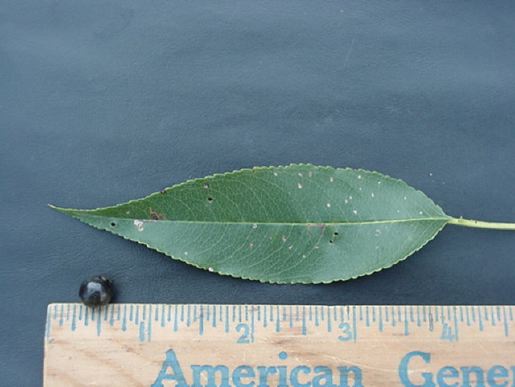
a. | White Ash | c. | Black
Oak | b. | Basswood | d. | Black
Cherry |
|
|
|
24.
|
(5 points) Identify this tree
species:
-Pinnately Compound Leaf
-Alternately placed on the stem

a. | Ohio Buckeye | c. | Shagbark
Hickory | b. | Black Walnut | d. | Bur
Oak |
|
|
|
25.
|
(5 points) Identify this tree
species:
-Simple Leaf
-Alternately placed on the stem

a. | Sycamore | c. | Bur
Oak | b. | Sugar Maple | d. | Basswood |
|
|
|
26.
|
(5 points) Identify this tree
species:
-Simple Leaf
-Oppositely placed on the stem

a. | Sugar Maple | c. | Sycamore | b. | Red
Maple | d. | Sweetgum |
|
|
|
27.
|
(5 points) Identify this tree
species:
-Pinnately Compound Leaf
-Alternately placed on the stem
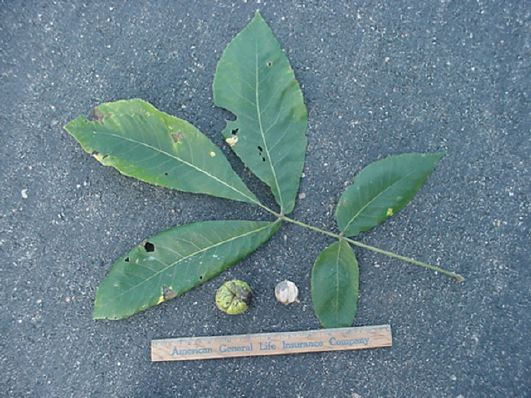
a. | Shagbark Hickory | c. | Ohio
Buckeye | b. | Black Walnut | d. | Black
Locust |
|
|
|
28.
|
(5 points) Identify this tree
species:
-Simple Leaf
-Alternately placed on the stem
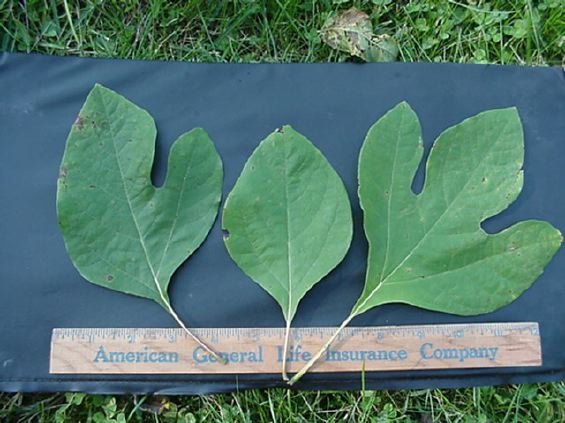
a. | Bur Oak | c. | Sassafras | b. | Black
Oak | d. | Ohio Buckeye |
|
|
|
29.
|
(5 points) Identify this tree
species:
-Needles are found in bundles of 5
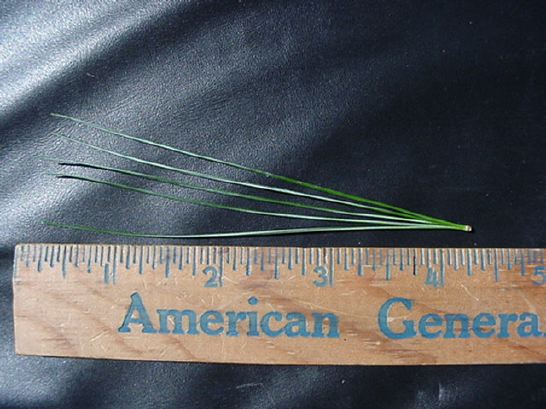
a. | White Cedar | c. | Scotch
Pine | b. | Pitch Pine | d. | White
Pine |
|
|
|
30.
|
(5 points) Identify this tree
species:
-Simple Leaf
-Alternately placed on the stem
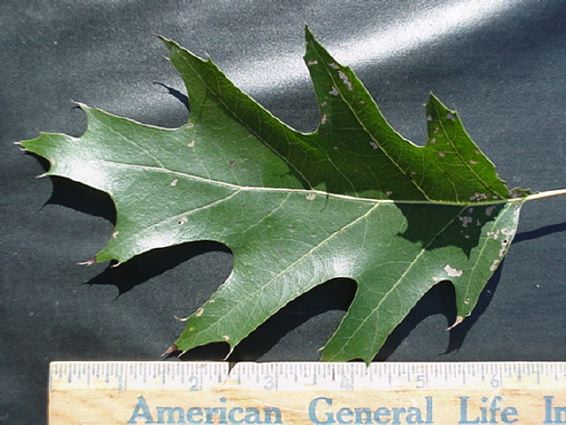
a. | Tulip Tree | c. | Bur
Oak | b. | Northern Red Oak | d. | Shingle
Oak |
|
|
|
31.
|
(5 points) Identify this tree
species:
-Palmately Compound Leaf
-Oppositely placed on the stem
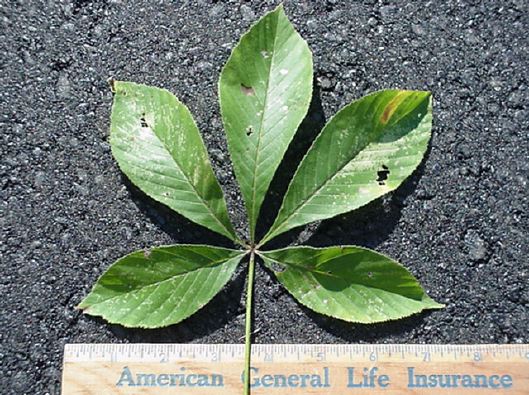
a. | Black Locust | c. | Black
Walnut | b. | Ohio Buckeye | d. | Shagbark
Hickory |
|
|
|
32.
|
(5 points) Identify this tree
species:
-Simple Leaf
-Alternately placed on the stem
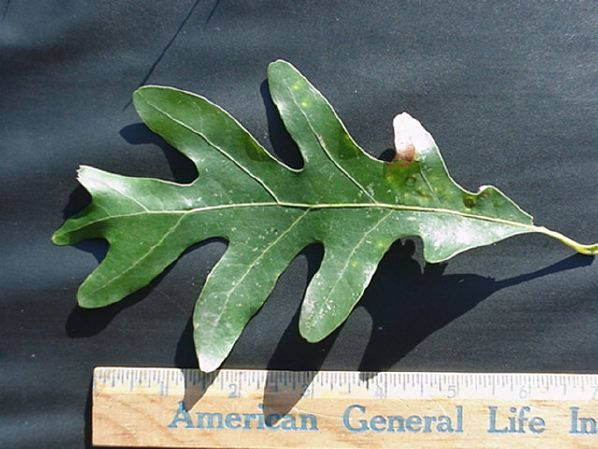
a. | Northern Red Oak | c. | Sugar
Maple | b. | American Hornbeam | d. | White
Oak |
|
|
|
33.
|
(5 points) The leaves of the
Black Locust are....
a. | simple | c. | palmately
compound | b. | pinnately compound | d. | bipinnately
compound |
|
|
|
34.
|
(5 points) This tree species
produces dark brown wood that is quite valuable, making it one of the most valuable tree species in
the Eastern forest.
a. | Black Walnut | c. | Northern Red
Oak | b. | Sugar Maple | d. | White
Oak |
|
|
|
35.
|
(5 points) This tree species is
considered the tallest of all Eastern hardwoods.
a. | Sycamore | c. | Shingle
Oak | b. | Ohio Buckeye | d. | Tulip
Tree |
|
|
|
36.
|
(5 points) A process
that takes place within the individual cells of plants and animals. It involves the breakdown of
foods into their components along with the release of energy.
a. | decomposition | c. | photosynthesis | b. | respiration | d. | biological
synthesis |
|
|
|
37.
|
(5 points) Four
elements account for 96% of the material that is found in living organisms. Which of the following is
NOT one of those four elements?
a. | Carbon | b. | Potassium | c. | Nitrogen | d. | Hydrogen |
|
|
|
38.
|
(5 points) Which of the
following is the most abundant element found in the atmosphere?
a. | Oxygen | b. | Carbon | c. | Hydrogen | d. | Nitrogen |
|
|
|
39.
|
(5 points) Which of the
following elements is the most abundant element found in living organisms?
a. | carbon | c. | oxygen | b. | nitrogen | d. | iron |
|
Multiple Response
Identify one or more choices that best complete
the statement or answer the question.
|
|
|
40.
|
(5 points) Which of the
following can be used to identify tree species? (Choose all that are correct)
|
|
|
41.
|
(5 points) Which of the
following tree species has leaves that are placed oppositely on a twig?
|
|
|
42.
|
(5 points) Indicate which of the
following tree species produces leaves that are pinnately compound.
|
|
|
43.
|
(5 points) Which of the
following evergreen trees produces needles that are found in bundles on the stem?
|
Numeric Response
|
|
|
44.
|
(5 points) An acre is a unit of
measure in the English system that is equal to ____________ square feet.
|
|
|
45.
|
(5 points) About _______% of the
earth’s people live on 10% of the land.
|
|
|
46.
|
(5 points) Demographers predict
that the world population will level off during the next century. Projections on the low end are
approximately 8 billion; projections on the high end are approximately ______ billion.
|
Completion
Complete each statement.
|
|
|
47.
|
(5 points) The first species to
colonize a lifeless surface in a situation of primary succession is called a ___________
species.
|
|
|
48.
|
(5 points) Forestry is the
science and art of cultivating, maintaining and developing forests. Another name for forestry
is_________________. (spelling counts)
|
|
|
49.
|
(5 points) Which tree species is
the main softwood tree species found in the Bottomland Forest Region?
____________________
|
|
|
50.
|
(5 points) The ceiling in the
forest is called the _______________, which consists of the crowns of the taller trees.
|
|
|
51.
|
(5 points) There are three main
parts or sections of a tree: roots, trunk and ________________. (spelling counts)
|
|
|
52.
|
(5 points) The _________________
of a tree consists of the branches, twigs, buds and leaves. (spelling counts)
|
|
|
53.
|
(5 points) The small stem-like
structure on a leaf that connects the blade to the main plan stem is known as the
______________________.
|
|
|
54.
|
(5 points) The bud at the end of
the stem, which can be vegetative or flowering, is known as the _________________ bud.
|
|
|
55.
|
(5 points) The scientific name
for Red Maple is Acer rubrum. Acer is the _________ of the tree. (genus or
species)
|
|
|
56.
|
(5 points) What continent as the
greatest population density?
|
|
|
57.
|
(5 points) The number of
non-working compared to working individuals in a population is known as the _______________
ratio.
|
|
|
58.
|
(5 points) The
________________________ _________________________ concept quantifies a person’s or
nation’s resource consumption in terms of area of biologically productive land and
water.
|
|
|
59.
|
(5 points) The state tree of
Ohio is the _____________ Buckeye.
|
|
|
60.
|
(5 points) The ______________ is
a large tree that produces white bark with brown patches that tend to flake off of the
tree.
|
|
|
61.
|
(5 points) The ___________ Cedar
produces very small cones that are often mistaken for blue berries.
|
|
|
62.
|
(5 points) Ecosystems consist of
living subsystems. Another name for living when referring to subsystems found in an ecosystem would
be ________. (spelling counts)
|
|
|
63.
|
(5 points) Ecosystems consist of
nonliving subsystems. Another name for nonliving when referring to subsystems found in an ecosystem
would be ________. (spelling counts)
|
|
|
64.
|
(5 points) The
____________________ law of energy states that energy cannot be created or destroyed, only converted
from one form of energy to another.
|
Matching
|
|
|
Match the following terms and their
definitions: a. | hardwood | e. | evergreen | b. | softwood | f. | tree | c. | deciduous | g. | shrub | d. | conifer |
|
|
|
65.
|
(5 points) a woody perennial
plant which general develops a single stem and is over 10 feet tall at maturity.
|
|
|
66.
|
(5 points) the wood from a
coniferous tree
|
|
|
67.
|
(5 points) any of various
mostly needle-leaved or scale-leaved cone-bearing trees or shrubs, such as pines, spruces and
firs.
|
|
|
68.
|
(5 points) a tree, shrub or
plant having foliage that persists and remains green throughout the year
|
|
|
69.
|
(5 points) a perennial plant
that loses its foliage at the end of the growing season
|
|
|
70.
|
(5 points) the wood from a
deciduous tree
|
|
|
Match the following terms to their respective
definitions. a. | organism | d. | ecosystem | b. | population | e. | biome | c. | community | f. | biosphere |
|
|
|
71.
|
(5 points) Any partially
self-contained environmental and living system.
|
|
|
72.
|
(5 points) An individual plant,
animal or other living thing.
|
|
|
73.
|
(5 points) All of the
populations of organisms that live within a defined area such as a woodland, marsh or
cornfield.
|
|
|
74.
|
(5 points) A group of connected
ecosystems.
|
|
|
75.
|
(5 points) A group of similiar
organisms that is found in a defined area.
|
|
|
Match the types of energy to their
definitions. a. | Kinetic | d. | Chemical | b. | Thermal | e. | Electrical | c. | Radiant | f. | Mechanical |
|
|
|
76.
|
(5 points) Energy that
comes from the sun.
|
|
|
77.
|
(5 points) Energy
created by man-made machines.
|
|
|
78.
|
(5 points) Energy that
is stored in plant tissues as sugars, oils and starches.
|
|
|
79.
|
(5 points) Energy that
is associated with motion and movement.
|
|
|
80.
|
(5 points) Energy that
is released as heat when fuels or nutrients are burned or digested.
|